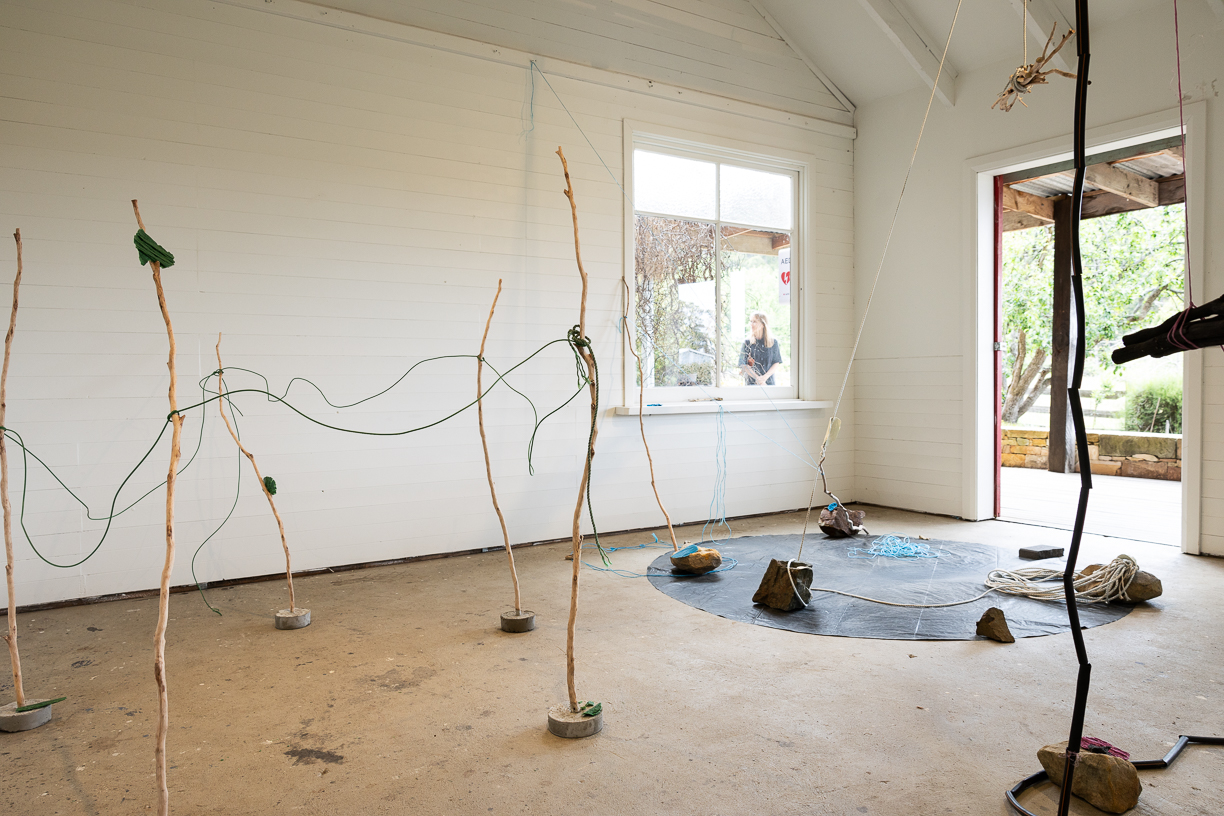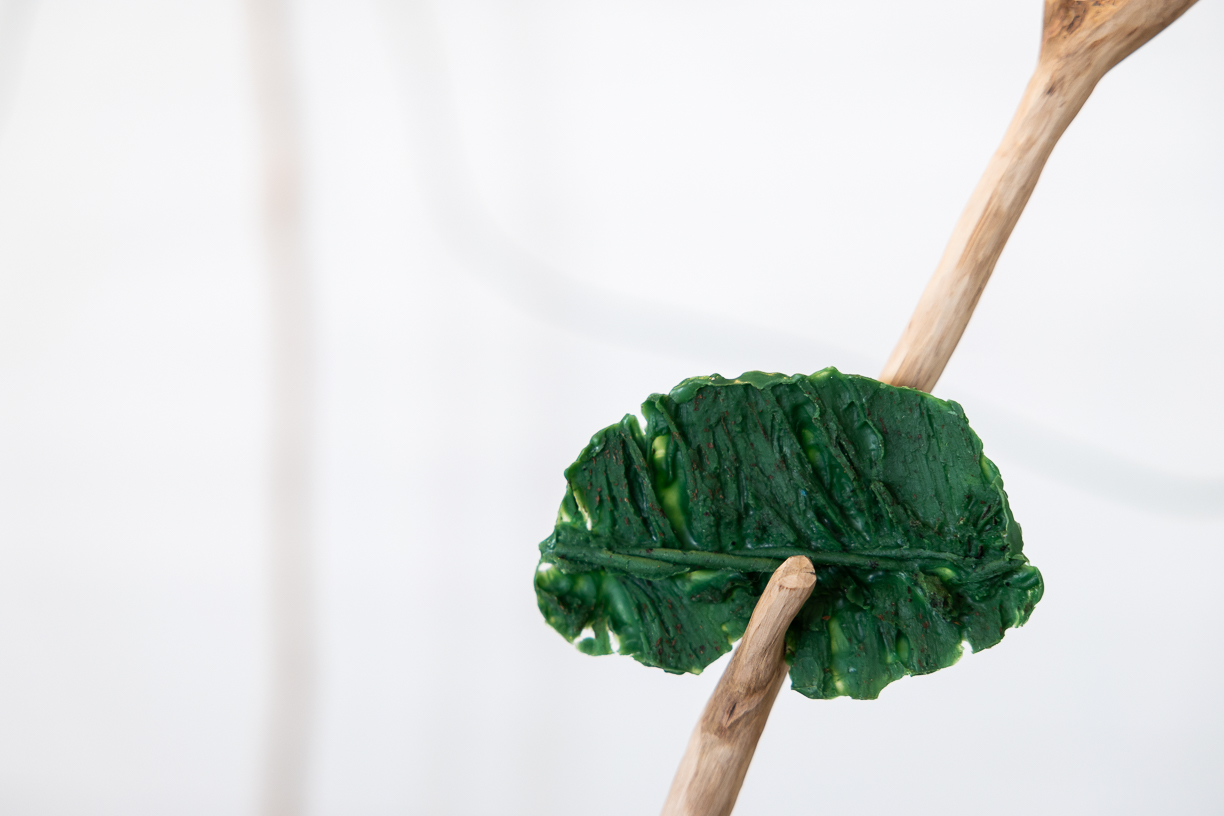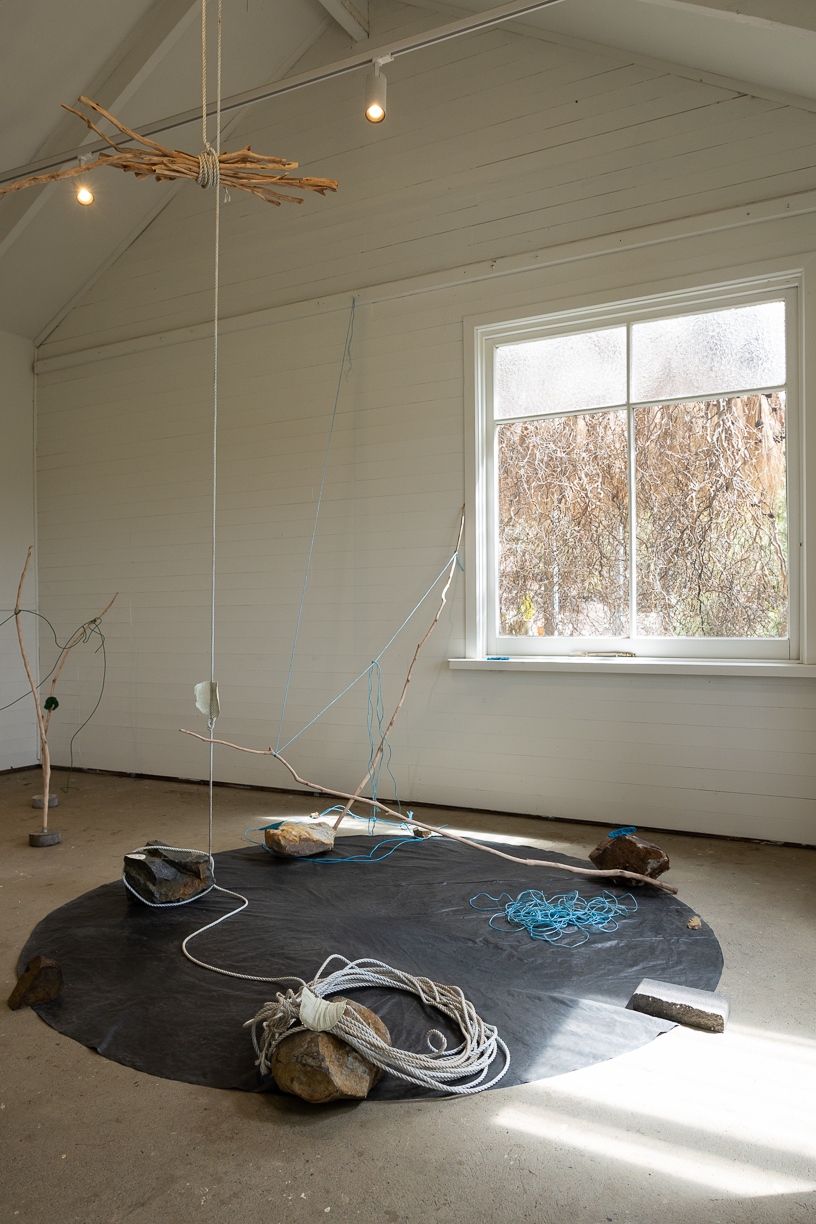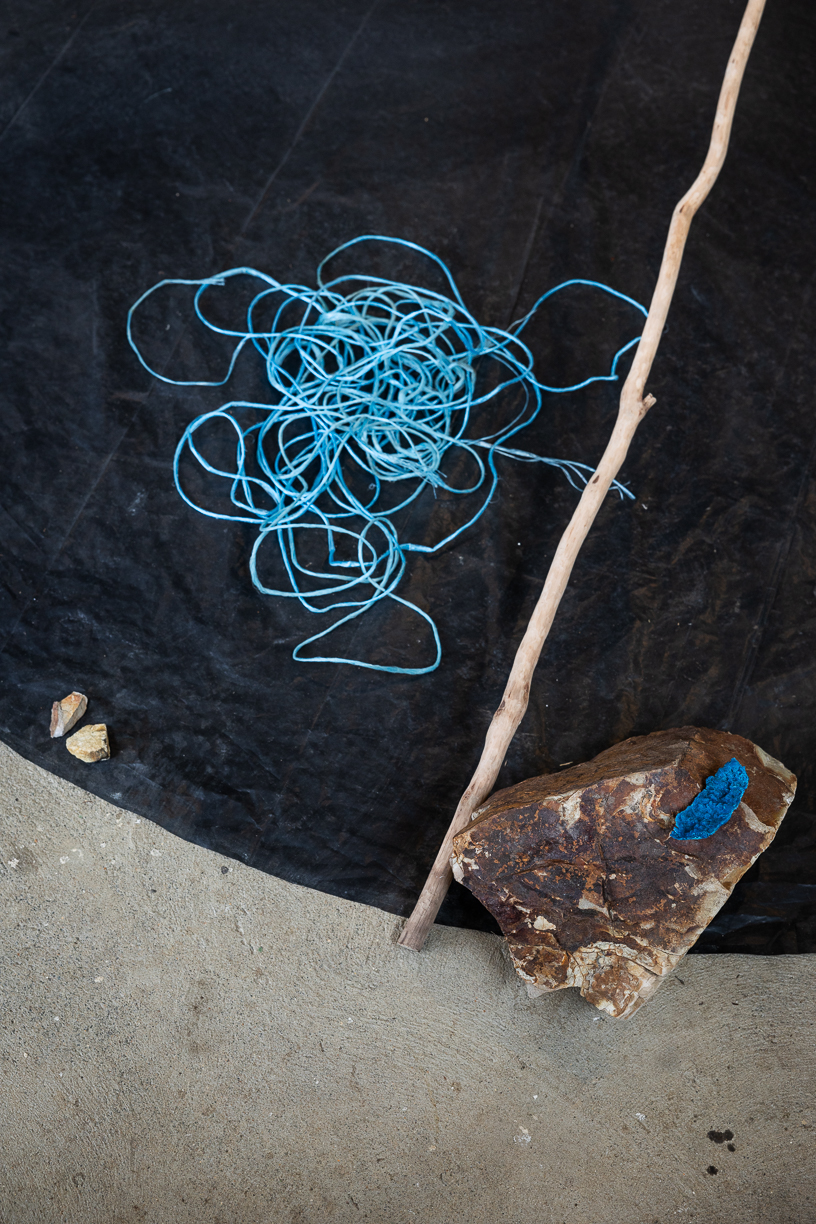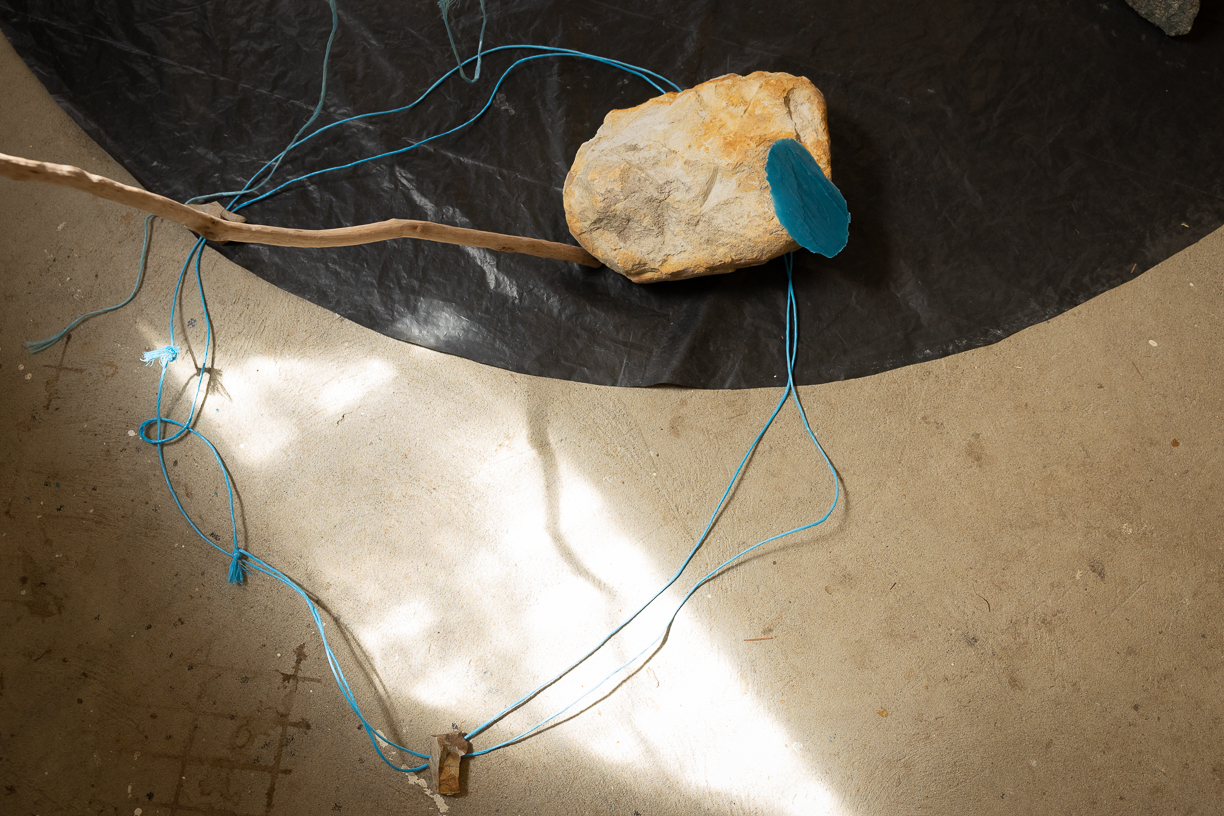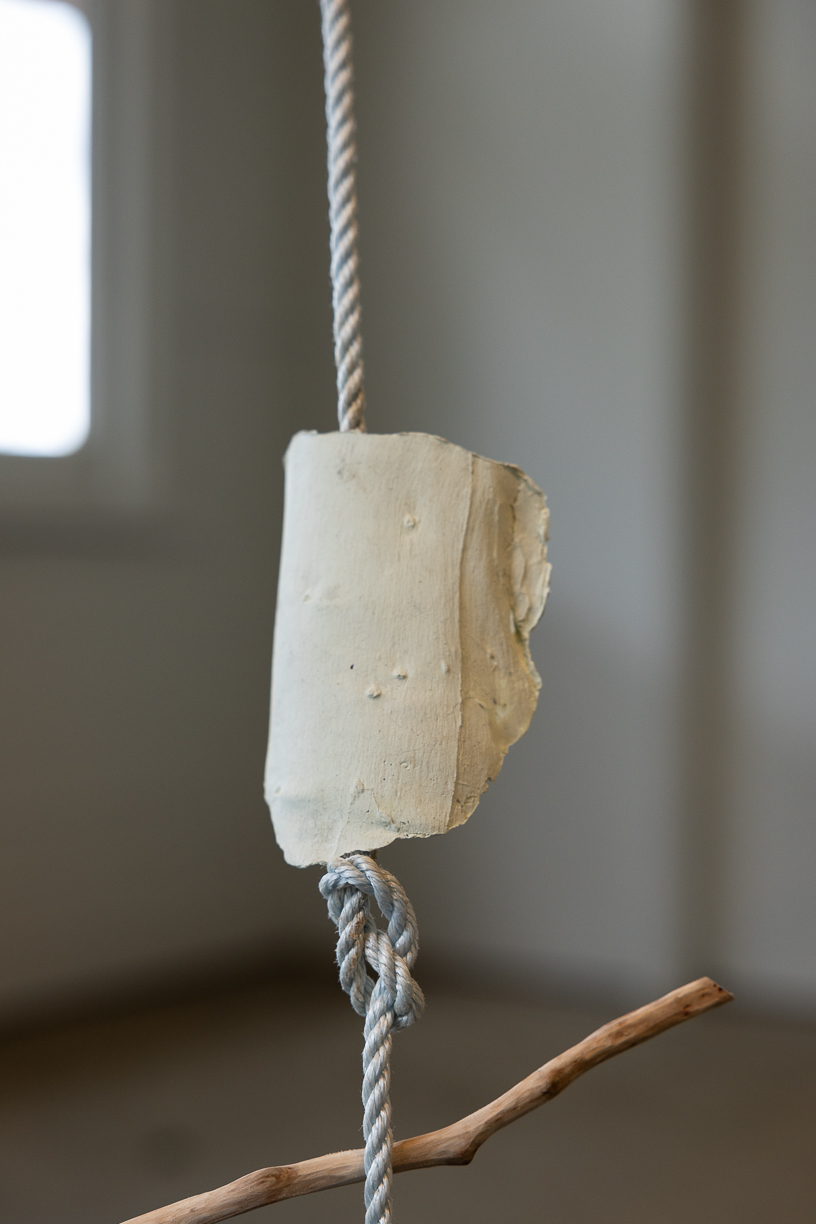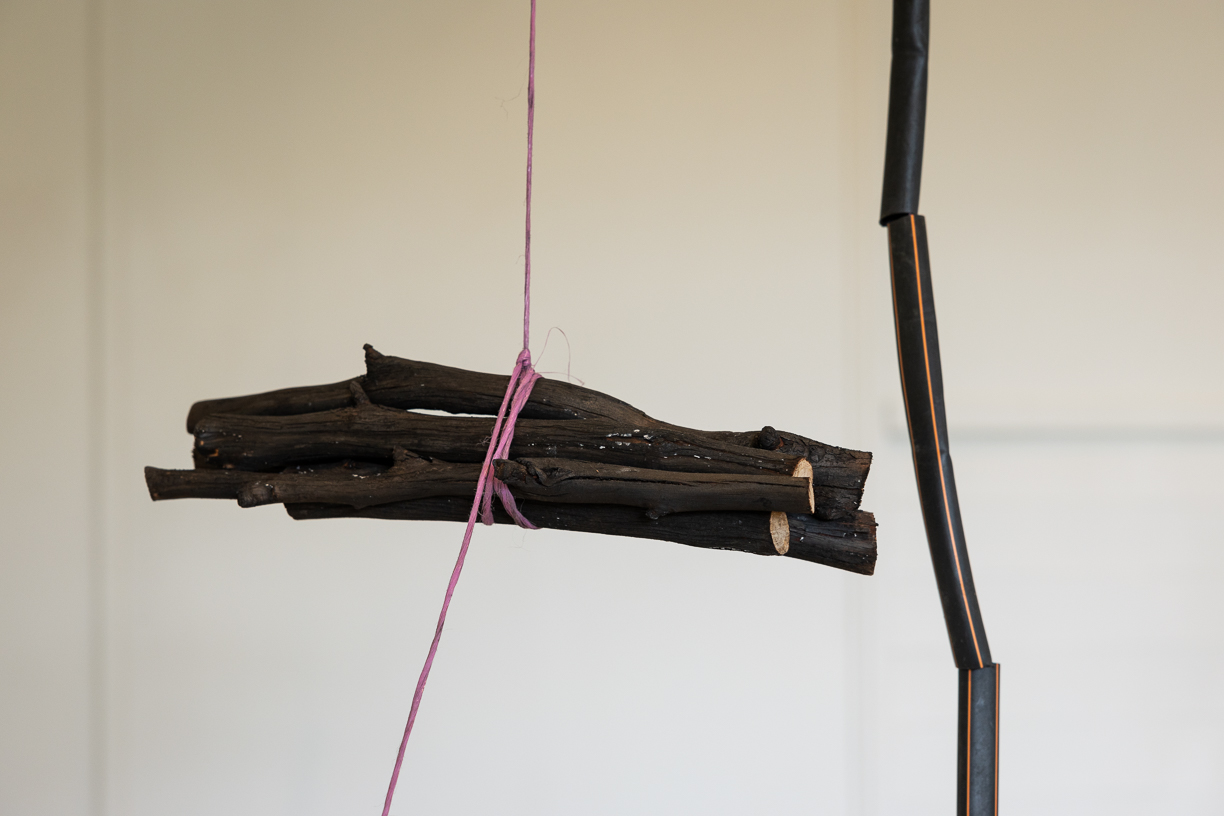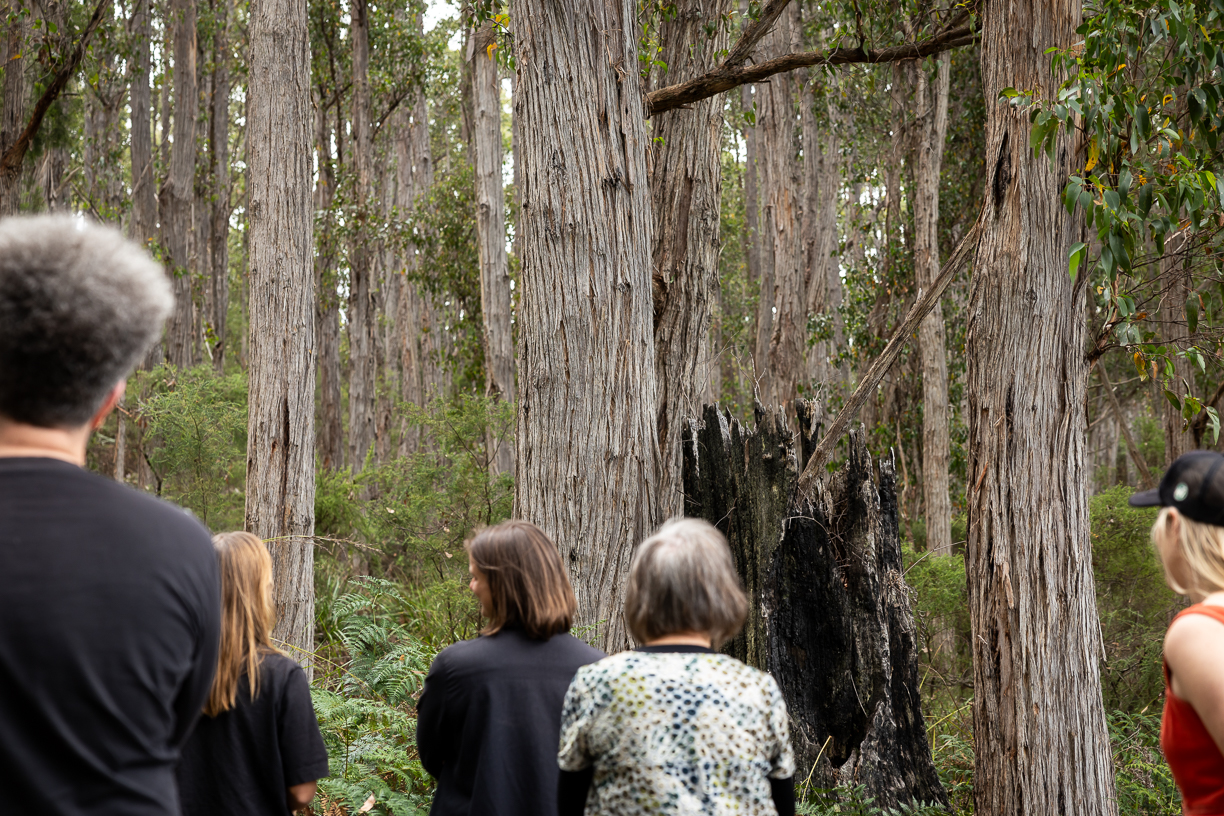![]()
![]()
Perenniel residency
25 November – 15 December 2024
Supported by Arts Tasmania
Art Farm Birch’s Bay, TAS
Photo documentation by Amy Brown
I read somewhere that you can estimate the age of a tree through a simple equation that begins with measuring its circumference. At the beginning of this residency, I was immediately drawn to the thick wall of bushland lying beyond the farm. Speaking with Chris, farmer and custodian of the Art Farm property, I learnt that the wet sclerophyll forest that borders the property is comprised of four main eucalyptus species colloquially known as: stringybark, blue gum, white peppermint gum and black peppermint gum.
Over three weeks, I committed to learning about these four trees through studio practice, returning to three different sites within the forest. The work in this residency was developed through an iterative process that stems from the initial act of measuring the circumference of each tree using string and rope sourced from around the property. Progressively, this act transitioned into gleaning other impressions from the outer surface of each eucalyptus trunk and the boundaries of the farm.
Over the past few years, my practice has become increasingly site-responsive. I endeavour to make my work in as much contact with a site that is responsibly possible, transferring fragments of its materiality into another form. I prefer to use waste materials that are local to an area and easy to carry with me. The process of drawing materials from place means that I engage in a process of place-fragmention, which is proportionate to the scale of what I can physically carry with me to the site and back to the studio. Therefore, not all information from a place can be transferred elsewhere. It is in this fragmentary process that a new site emerges between place and sculptural processes.
Using string that is widely applied in the operations around the farm – tying, securing, demarcating, wrapping, looping, suspending – I reoriented this material towards a different application: measuring a tree’s approximate circumference. In doing so, a relationship emerged where the bounds and growth of the property were brought into dialogue with the bounds and growth of four select trees: their materialities, their histories and their ecological contingencies. I increasingly drew relationships between the eucalyptus trees of the forest surrounding the property, the demarcation of borders delineating the farm from the bush, and the limited sculptural mediums I had selected to work with. Resultingly, I considered the forest and farm as two cultivated and mediated spaces that are not separate but contingent ecological communities continuing to shape and renew one another and how sculptural practice may intervene to reveal the embrace and tension of this interaction.
